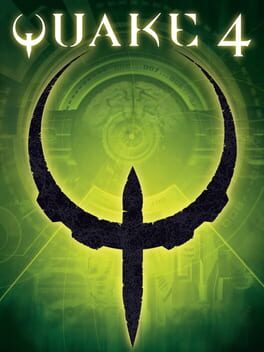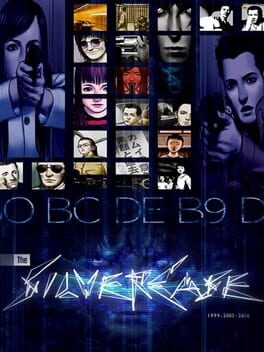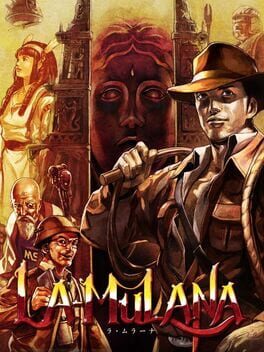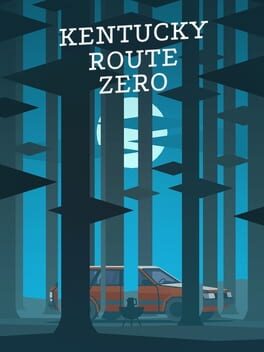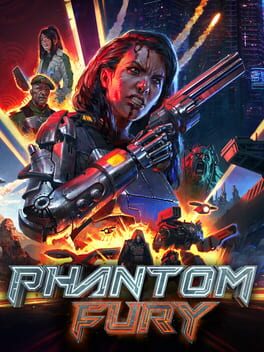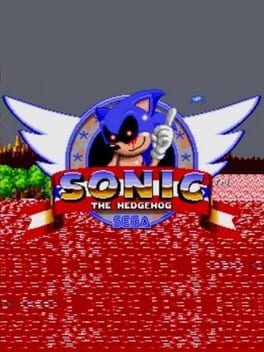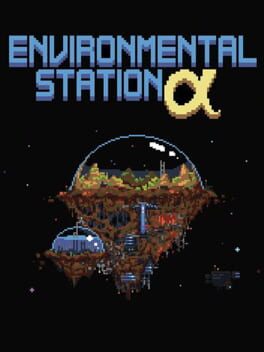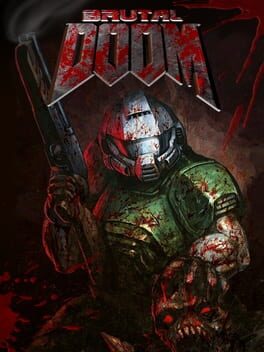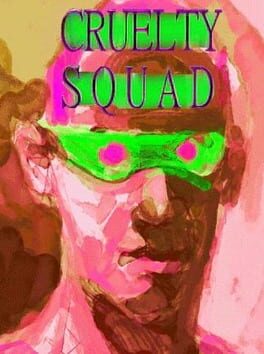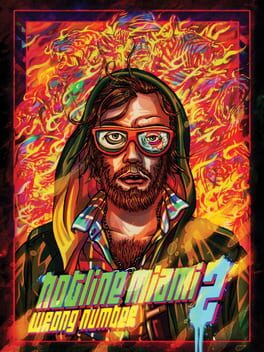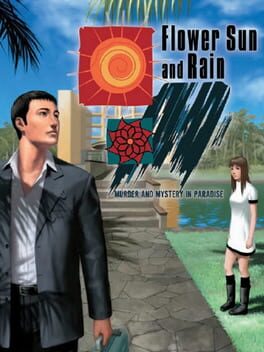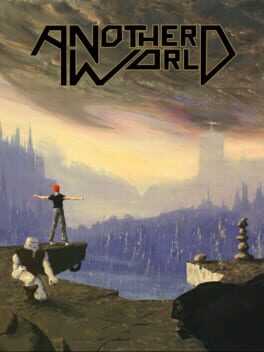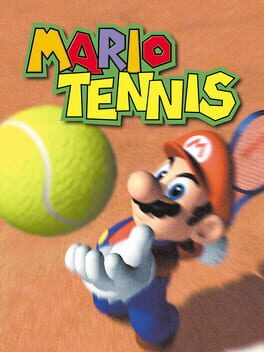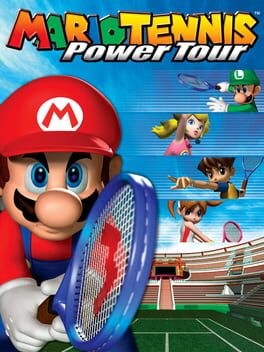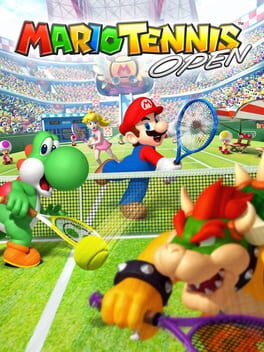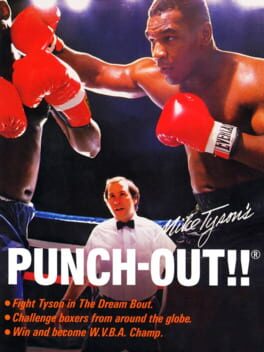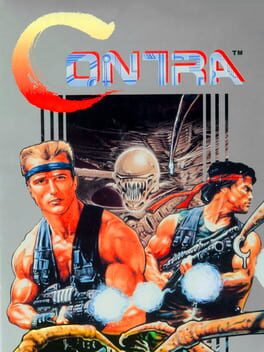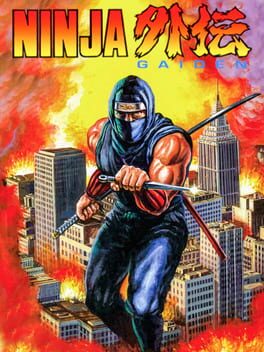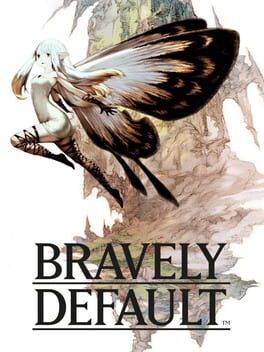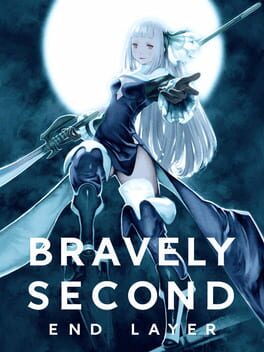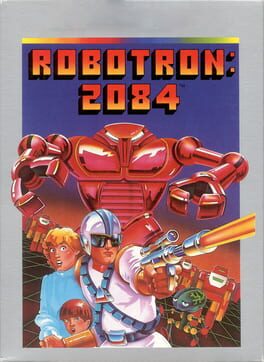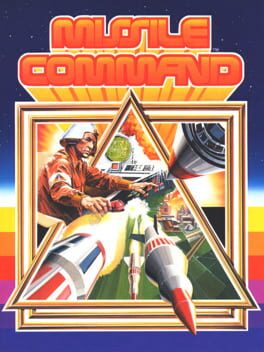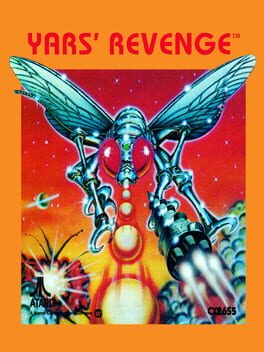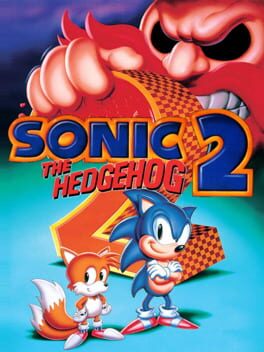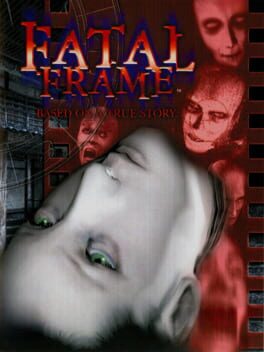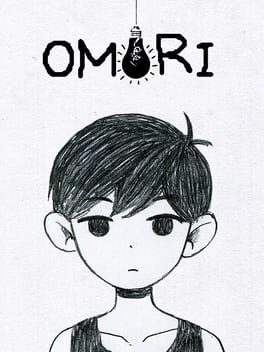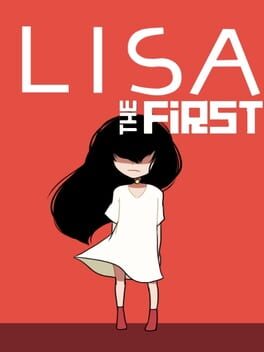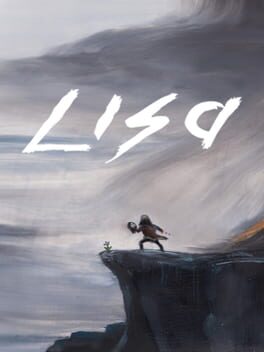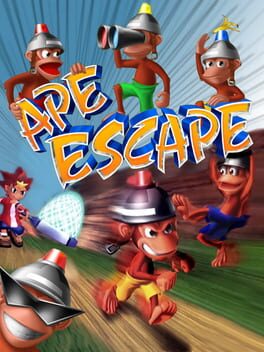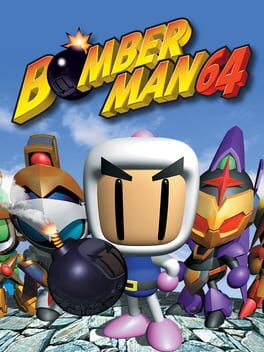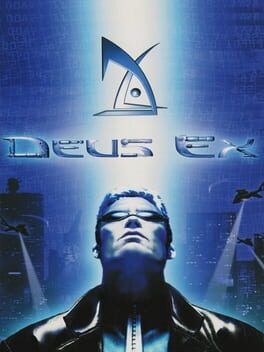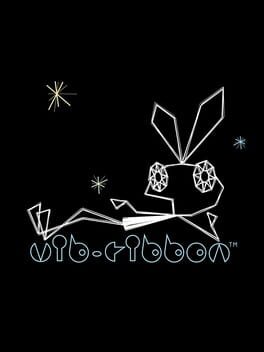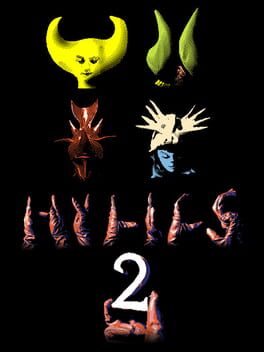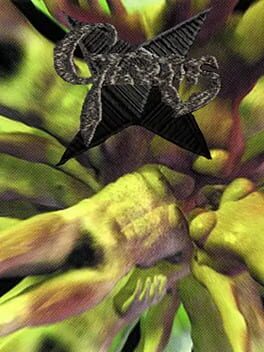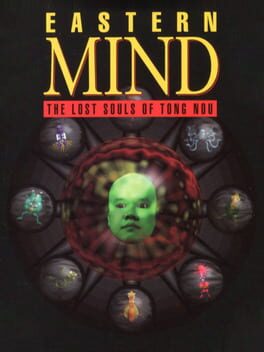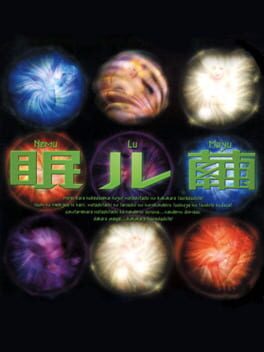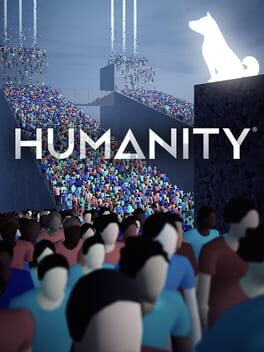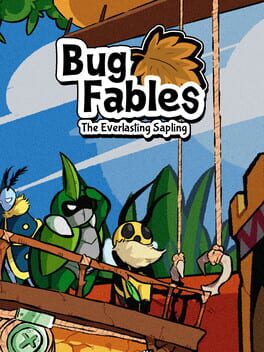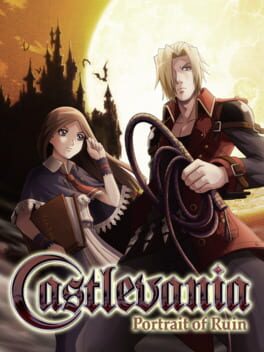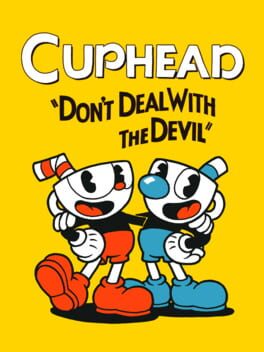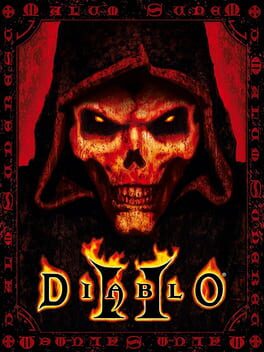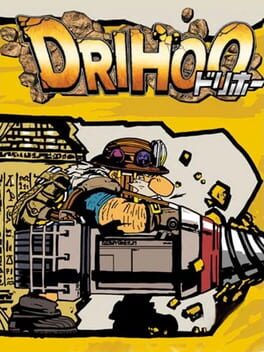Rogueliker
BACKER
311 reviews liked by Rogueliker
Quake 4
2005
The stroggification scene is fucking nightmarish and I love it. It makes me uncomfortable but in the best way possible because A.) you're locked in an FPS perspective the whole way through, which adds a tangible and personal feeling of body horror the whole scene, and B.) you're right behind a guy the entire time, so you get to watch the process happen to him first, a small and subtle but brilliant choice that makes the painful incisions and dismemberments that happen to your guy all the more tense and frightening. You know what's coming, and it makes the moment when it happens hit that much harder. I also like that it never gets too gory - the guy in front of you is always just far enough away that you can only get a vague but discernible portrait of the horror that awaits you, and even when it does happen to you, the limiting first-person perspective actually makes it easier to process what's happening instead of being permitted a full third-person view of the gory details. It is a brilliant horror scene that's actually aided by the video game medium, because the stroggification would be nowhere near as tangible and icky-feeling if it wasn't in a first-person perspective, something that only feels plausible and natural in a video game setting. The stroggification scene rocks.
the rest of this though, uh, what the fuck is this??? Basic-ass generic oorah first-person shooter that has virtually nothing to do with Quake's dusty regality or gothic industrialism. I'd argue it's even more of a blemish on the series that the notoriously unfitting Doom 3 was to Doom. id Software properties at the time were in dire straits, lemme tell you.
the rest of this though, uh, what the fuck is this??? Basic-ass generic oorah first-person shooter that has virtually nothing to do with Quake's dusty regality or gothic industrialism. I'd argue it's even more of a blemish on the series that the notoriously unfitting Doom 3 was to Doom. id Software properties at the time were in dire straits, lemme tell you.
The Silver Case
2016
"Kill the past."
SUDA51 is a well-renown figure in the gaming industry. A revolutionary auteur with a unique voice and interesting stories to tell, his games receive critical acclaim and recognition as masterful works of both art and gameplay. But until now, that's never been the case for me personally. For the longest time, I only knew of SUDA51 as some Japanese weirdo who made games about weeaboos with lightsabers or cheerleaders fighting zombies: games that struck me as shallow and obnoxiously quirky. It didn't help the only exposure I had to SUDA51's oeuvre was surface-level commentary by outlets and gamers that reduced his work to "Woah, so wacky!" and completely missed whatever messages his works tried to convey. So it was quite the culture shock to join this website and see SUDA51 not only be critically acclaimed, but revered by the user base, who sung the man's praises to high heaven. This served as the impetus for me to finally give the man a second chance with The Silver Case, and the only thing I have to say is I wish that I had done it sooner!
The Silver Case is a visual novel/adventure game hybrid following two protagonists: An unnamed Heinous Crimes Unit agent, and jaded chain-smoking journalist/carnivorous plant enthusiast Tokio Morishima, both of whom are investigating infamous serial killer Kamui Uehara, a recently escaped mental hospital patient and the man behind the titular Silver Case. Over the course of two parallel storylines, the plot soon reveals itself to be more complex than it initially seemed, and this is where The Silver Case's strengths come to the forefront. Covering themes of political intrigue, the internet and its effects in real life, the nature of crime and its relation to the media, the desire for change in society, and most importantly: what it means to kill the past, and move on from the chains that bind you to it. Everyone in the plot is chained in some way to the past, whether it be their own or the past of powers beyond their comprehension, and the heart of the story lies not in the conspiracies or exposition, but in seeing how the people involved in this metaphorical game of 4th dimensional chess either face, kill or succumb to their own history.
As a visual novel, your strengths are gonna be your aesthetics and your writing, and The Silver Case knocks it out of the ballpark on both accounts. The presentation is unique and visually striking: A multimedia mix of animation, live-action FMV and CGI, taking place in these bizarre yet intimate low-poly liminal spaces, all viewed through a Y2K-evocative UI framed much like a comic/manga, with varying screen sizes and orientations and unique illustrations for events in-game. The way each Chapter closes out like the end of a TV episode is just the cherry on top honestly. On the writing end, the way our protagonists are written as diametrically opposed opposites is interesting. The silent HCU agent; a borderline non-entity, an empty shell with no defined past or personality for the player to experience the story, and frequently commented on as being a ghoulish, silent weirdo, someone who's status in story mirrors that of the player: a mere vessel for events bigger and more intricate than him. Morishima in contrast, is a defined character, with a past, a goal, a strong personality and a much smaller scale plot-wise than our HCU Agent, and yet the two end up so intimately entwined with each other's stories that we realize how similar they are and how they move the plot along. It's very well done, even if the need to alternate stories isn't explained very well in-game.
The preconceived notions I had about SUDA51's work in the past have been shattered with naught but a single game, and in a way, it mirrors the message of The Silver Case: Kill the past, and free yourself from your burdens. By killing my prejudice by playing The Silver Case, I've opened myself to a whole new world of entertainment I'd've never given the light of day before. Maybe it's something you too should look into.
SUDA51 is a well-renown figure in the gaming industry. A revolutionary auteur with a unique voice and interesting stories to tell, his games receive critical acclaim and recognition as masterful works of both art and gameplay. But until now, that's never been the case for me personally. For the longest time, I only knew of SUDA51 as some Japanese weirdo who made games about weeaboos with lightsabers or cheerleaders fighting zombies: games that struck me as shallow and obnoxiously quirky. It didn't help the only exposure I had to SUDA51's oeuvre was surface-level commentary by outlets and gamers that reduced his work to "Woah, so wacky!" and completely missed whatever messages his works tried to convey. So it was quite the culture shock to join this website and see SUDA51 not only be critically acclaimed, but revered by the user base, who sung the man's praises to high heaven. This served as the impetus for me to finally give the man a second chance with The Silver Case, and the only thing I have to say is I wish that I had done it sooner!
The Silver Case is a visual novel/adventure game hybrid following two protagonists: An unnamed Heinous Crimes Unit agent, and jaded chain-smoking journalist/carnivorous plant enthusiast Tokio Morishima, both of whom are investigating infamous serial killer Kamui Uehara, a recently escaped mental hospital patient and the man behind the titular Silver Case. Over the course of two parallel storylines, the plot soon reveals itself to be more complex than it initially seemed, and this is where The Silver Case's strengths come to the forefront. Covering themes of political intrigue, the internet and its effects in real life, the nature of crime and its relation to the media, the desire for change in society, and most importantly: what it means to kill the past, and move on from the chains that bind you to it. Everyone in the plot is chained in some way to the past, whether it be their own or the past of powers beyond their comprehension, and the heart of the story lies not in the conspiracies or exposition, but in seeing how the people involved in this metaphorical game of 4th dimensional chess either face, kill or succumb to their own history.
As a visual novel, your strengths are gonna be your aesthetics and your writing, and The Silver Case knocks it out of the ballpark on both accounts. The presentation is unique and visually striking: A multimedia mix of animation, live-action FMV and CGI, taking place in these bizarre yet intimate low-poly liminal spaces, all viewed through a Y2K-evocative UI framed much like a comic/manga, with varying screen sizes and orientations and unique illustrations for events in-game. The way each Chapter closes out like the end of a TV episode is just the cherry on top honestly. On the writing end, the way our protagonists are written as diametrically opposed opposites is interesting. The silent HCU agent; a borderline non-entity, an empty shell with no defined past or personality for the player to experience the story, and frequently commented on as being a ghoulish, silent weirdo, someone who's status in story mirrors that of the player: a mere vessel for events bigger and more intricate than him. Morishima in contrast, is a defined character, with a past, a goal, a strong personality and a much smaller scale plot-wise than our HCU Agent, and yet the two end up so intimately entwined with each other's stories that we realize how similar they are and how they move the plot along. It's very well done, even if the need to alternate stories isn't explained very well in-game.
The preconceived notions I had about SUDA51's work in the past have been shattered with naught but a single game, and in a way, it mirrors the message of The Silver Case: Kill the past, and free yourself from your burdens. By killing my prejudice by playing The Silver Case, I've opened myself to a whole new world of entertainment I'd've never given the light of day before. Maybe it's something you too should look into.
La-Mulana
2012
Modern videogame design sensibilities dictate that a good videogame should always telegraph in advance the presence of traps, because trial and error is inherently a frustrating endeavor that doesn't give the player the opportunity to overcome the odds and be rewarded for it. It states that subjecting the player to long stretches of backtracking and being lost without knowing where to go is a sign of poor game structure, bad pacing and lazy level design that does not do enough to inform the player on how to play the game. It also suggests that required puzzle solving that gates progression should be easily understood as such and shouldn't be obtuse, elusive and hidden into the background in such a manner that in order to figure it out you must remember a hint you misinterpreted as flavor lore text 10 hours ago.
La-Mulana's ability to repeatedly laugh and spit in the face of what the collective videogame machine has evolved into over the years is the game's ultimate defining characteristic and statement, and while clearly inspired by retro classics of old, its meticulous and labored world map combined with an insurmountable obsession with lateral thinking puzzle solving makes it stand out as a one of kind experience in the medium that is as new and fresh as playing Demon's Souls for the first time in 2009. Indifferent to whatever whims the common player might bring into it, stages are never truly beaten, simply becoming part of an ever increasing tapestry of interconnected threads left hanging until the very last moments of the credits, and as you quickly realize the importance of details and minutia you have been conditioned to ignore by years of gaming, La-Mulana gains a level of dimensionality to its deceptive sidescrolling origins that turn most 3D ventures into cardboard cut-out playgrounds in comparison.
La-Mulana is definitely unfair, but it is so by design. And that unfairness is easily appreciated when it constantly displays a clear labor of love and wonderment for the unique power of discovery and conquest videogames excel at, utilizing its cruelty to exploit comedy out of the player's expense and turning every small note taking, picture drawing and logical leap of faith into a victory for the unlimited human ingenuity and perseverance. Even if you find yourself abusing an online guide, it is worth taking the La-Mulana journey, if only to see how every dungeon feeds into each other and witness the absurd mental gymnastics the game requests of your wellbeing. When the final puzzle brough me all the way back to one of the first brain teasers in the game, I reached nirvana. And I'm not ashamed to say it, I soyfaced.
Completing La-Mulana without a guide must be akin to surviving a Vipassana meditation retreat, a life changing religious experience that fundamentally shifts the way you perceive the world around you. In order to do so, you just have to get past your biggest misgivings as a human being, learn to shut off the white noise in your brain, accept the uncomfortableness of your body and mind, and bash your head into a indecipherable stone mural with retractable spikes that knock you 2 meters back into a pit you have to climb back from again while you heavily breathe in and breath out.
One day, La-Mulana 2.
La-Mulana's ability to repeatedly laugh and spit in the face of what the collective videogame machine has evolved into over the years is the game's ultimate defining characteristic and statement, and while clearly inspired by retro classics of old, its meticulous and labored world map combined with an insurmountable obsession with lateral thinking puzzle solving makes it stand out as a one of kind experience in the medium that is as new and fresh as playing Demon's Souls for the first time in 2009. Indifferent to whatever whims the common player might bring into it, stages are never truly beaten, simply becoming part of an ever increasing tapestry of interconnected threads left hanging until the very last moments of the credits, and as you quickly realize the importance of details and minutia you have been conditioned to ignore by years of gaming, La-Mulana gains a level of dimensionality to its deceptive sidescrolling origins that turn most 3D ventures into cardboard cut-out playgrounds in comparison.
La-Mulana is definitely unfair, but it is so by design. And that unfairness is easily appreciated when it constantly displays a clear labor of love and wonderment for the unique power of discovery and conquest videogames excel at, utilizing its cruelty to exploit comedy out of the player's expense and turning every small note taking, picture drawing and logical leap of faith into a victory for the unlimited human ingenuity and perseverance. Even if you find yourself abusing an online guide, it is worth taking the La-Mulana journey, if only to see how every dungeon feeds into each other and witness the absurd mental gymnastics the game requests of your wellbeing. When the final puzzle brough me all the way back to one of the first brain teasers in the game, I reached nirvana. And I'm not ashamed to say it, I soyfaced.
Completing La-Mulana without a guide must be akin to surviving a Vipassana meditation retreat, a life changing religious experience that fundamentally shifts the way you perceive the world around you. In order to do so, you just have to get past your biggest misgivings as a human being, learn to shut off the white noise in your brain, accept the uncomfortableness of your body and mind, and bash your head into a indecipherable stone mural with retractable spikes that knock you 2 meters back into a pit you have to climb back from again while you heavily breathe in and breath out.
One day, La-Mulana 2.
Kentucky Route Zero
2013
I like surreal things, I like abstract things, I like slow things, I like reading, but man, there needs to be something for me to hold on to to make it through this. Vibes and themes alone aren't enough.
You'll see this compared to Lynch - it bears absolutely no resemblence to his work beyond the most superficial. Every second of anything he has ever done, no matter how 'dreamlike', is animated by the most powerful and clear emotional core. And that is, in fact, the point of the exercise. It's just as easy to tell what his stuff is 'about' as it is with this game, but he communicates it in feelings through image and performance - this game does it through dry, detached, opaque walls of text and deliberate tedium. Sorry, but one of those is a hell of a lot more compelling to me than the other.
You'll see this compared to Lynch - it bears absolutely no resemblence to his work beyond the most superficial. Every second of anything he has ever done, no matter how 'dreamlike', is animated by the most powerful and clear emotional core. And that is, in fact, the point of the exercise. It's just as easy to tell what his stuff is 'about' as it is with this game, but he communicates it in feelings through image and performance - this game does it through dry, detached, opaque walls of text and deliberate tedium. Sorry, but one of those is a hell of a lot more compelling to me than the other.
Phantom Fury
2024
Where do I even start. Do I talk about how Ion Fury is my single favorite indie fps ever made and a near-perfect experience? Do I talk about the Half-Life series, and how it single-handedly kickstarted my love for FPS games, and how the first one is still my favorite overall game ever all these years later? I don't know. Let's just get this over with.
Phantom Fury is not good. It's a buggy, subpar, amateur, unfinished, unfocused mess of a game that clearly needed another year or two to fix all it's problems, and I truly believe that no amount of patches will fix the underlying design issues. It's not the worst indie FPS I've played, nor do I think it is on par with retail DNF or Blood 2, but some of the comparisons are valid in some aspects.
For starters, I want to emphasize: I did not pay for this game because I refuse to support people who both publicly and privately shit on reviewers that THEY THEMSELVES gave out codes for just because they didn't exactly have nice things to say. Not even full on malicious takedowns of the game mind you, just saying they didn't like it and giving constructive criticism about it. But this is a whole another topic entirely.
Let's get the obvious out of the way first: Phantom Fury's inspirations are obvious if you've seen that reveal trailer from 2 years back-- mixing together the pre-existing success of Voidpoint's Ion Fury (which to remind you, that team had NOTHING to do with this game), and blending it together with the linear narrative structure with Half-Life, and more specifically, the early 2000s-era builds of Duke Nukem Forever.
This is NOT a Half-Life game, nor is it anything CLOSE to the older DNF builds. It tries to be, but it's attempts after the first few levels come down to just reminding you of those games and how you could be playing them instead. Half-Life's level design was incredibly linear, with minimal backtracking save for a few chapters (such as HL1's Blast Pit), usually with a clear objective set by the game and you going from point A to B to C. The level design in Phantom Fury instead mostly comprises of standard, labyrinthian keyhunts you'd see in other more DOOM-inspired games, with little to no signposting to speak of save for an objective list. There was one point where I genuinely got lost for 30 minutes because a fucking ladder blended into the environment and I didn't know I had to go back to where I just was AT THE START OF A LEVEL. It's just so bad.
Let's continue with what to most will be a nitpick, but matters a lot when talking about Half-Life inspired games. What immediately comes to mind when you think of HL's presentation and design? An unbroken first-person narrative, with each area seamlessly transitioning to the next. The game does do this during some of the first few levels, but the illusion is immediately broken by forcing a fade to black and a loading screen with just the game's title art. Half-life's loading screens simply just froze on the last thing you saw as you loaded to the next level, making for only a small break and not taking you out of the setting. And even aside from this, the game just stops trying with seamlessly connecting the levels after the halfway point, simply just teleporting you from one area to the next.
Going back to level design, the layouts are painfully boring, and the location variety is nothing you've seen before in other games. I find it so funny how this game is described by 3DR as a "road trip" game, but really thinking about it, how many places did we go in total? 14 of this game's 18 levels take place in either a desert-like location, or a secret lab of some kind. It's only for the game's final two levels that the variety changes, but even with that, Chicago feels nothing more but a bootleg gm_bigcity but with random enemies placed all over the place. You're mostly stuck to the road with being unable to go inside a lot of buildings, and almost no verticality to speak of. And even with that, most of this game's levels just love to replicate HL1/2's big setpieces except done worse in every way. Remember the helicopter fight in surface tension on the cliffside? Here it is again with basically no level design difference! Remember Water Hazard's chase sequence with all the parked combine cars shooting at you? Here it is again except with a bootleg Halo warthog that controls horribly and no risk of death in an already braindead game! Remember HL2's final few chapters as you storm City 17, with Dr. Breen on the TVs in the background scolding you? Here it is again, except in Chicago with worse level and combat design and no AI squadmates!
Combat and enemy encounter design is an actual joke. 90% of the combat encounters in this game boil down to "here's 20 of the same enemies, have fun!" There is no variation here whatsoever, not helped by the AI being dumb as a sack of bricks. This game loves to throw the zombie enemies at you in large groups and they get so tiring to fight fast, and heavier enemies in groups are just pure bullshit. I played on normal difficulty and this game could not find a medium between purely braindead and pure bullshit. This in particular is where I feel some of the B2 comparison is justified, since it's clear this game wants to be as hard as Ion Fury, yet doesn't understand just why that game was still fair in the first place, and by extension, WHY Half-Life's combat was also challenging yet fair. The EDF soldier AI in the DNF 2001 leak is more intelligent and fun to fight, and it wasn't even for a game that was considered finished, for christ's sake. On top of this, no quicksaves. Only checkpoints. This wouldn't be an issue if this was like a modern DOOM game where it made a checkpoint before and after every enemy encounter, but this game does it whenever the hell it feels like it. I've had to replay 10+ minute sections because I died to one bullshit enemy shot and because the game is so fucking stingy with health pickups and how much they actually give you for the first 2/3rds. How the hell hasn't this company learned since the release of ROTT 2013 to put quicksaves in your retro shooters?
If you think anything in this game is new or would expand upon what we saw in that iconic DNF 2001 trailer, just don't. Aside from a bar level obviously alluding to the Slick Willy and a shield powerup that mechanically isn't different from the riot shield we saw in that trailer, there is nothing new here. It really makes me wonder just how much was even pulled from those old builds. WAS there anything new to pull from? The 01 build had better versions that exist out there that 3DR had ownership to, did they have to cut it out?
The weapons do feel better from the demo, but they still don't feel good at all and don't hold a candle to either DNF01, HL or IF's loadout in terms of raw satisfaction. They honestly feel artificially tweaked, since the only real difference I feel now is that the enemies are more prone to gibbing. Seriously, I'll shoot a guy in the head with the shitty BASE PISTOL, and somehow their leg will come off as well alongside exploding their head. The bowling bombs were done so dirty here. What was once a satisfying addition to build engine explosive weapons is now a frustratingly inconsistent thing that cannot snap onto enemies for the life of them. The Ion Bow is... fine, but it feels signifigantly nerfed from how it was in IF since the charged autofire now has a slower fire rate and now the triple-shot alt fire is replaced with... aiming down sights for some reason. Why? I feel like the loverboy had an alright transition, and the motherflakker is probably the most satisfying weapon period in this game, but that's about it. Everything else just feels bad.
The weapon mods you can find through upgrades are just plain useless for the most part. There's a couple of useful ones like the dual welding for the smgs but the rest either wern't fun to use or gave the weapon obvious downsides (Why do BOTH bowling bomb mods REMOVE the tracking???). I didn't even bother with half of them after a certain point since it was clear most of the actually valuable upgrades were for the arm and suit. On top of this, after the halfway point of the game new weapons you get just don't get mods. At all. Even the selection you have in the game as-is feels pitiful, since some guns only have one mod upgrade for them. This is another thing that just SCREAMS "unfinished and rushed out the door".
The story just makes no sense. Ignoring the fact that this supposedly takes place after Aftershock and Shelly is just fine working with the GDF again after they actively funded Heskel's experiments and hunted her down, this game just tries too hard with trying to make me care. IF didn't need a complicated story other then "stop Heskel", and neither was DNF01 if the leak was anything to go by. The deepest it got was the president having issues with how Duke handled the aliens but that was that. Even with that, literally WHAT was the motivation bootleg general graves had for turning on Shelly? Turning people into cyborgs like Heskel? That'd sure be cool IF WE COULD SEE THAT. And if that wasn't enough, this game has the BALLS to throw in ANOTHER TWIST VILLAIN AT IN THE LAST 5 MINUTES FOR THE SAKE OF ONE FINAL BOSS. Christ, and I thought Wrath's twist was hastily revealed and unnecessary. And it's done so stupidly too, seriously, the exact MOMENT mission control lady started babbling on about how Heskel could've saved the world Shelly should've just shot her on the spot. This game has a large emphasis on melodrama period and it's so fucking cringe. Shelly's entire trauma is that she couldn't defuse one bomb but at the end she IS able to defuse it! Just none of this was needed.
This game has no personality period. Unlike IF where it clearly had attitude from the start and actually had some good laughs here and there, this game doesn't even TRY with that. There's no cool locations or memorable lines at all, it's just a slog the whole way through. Shelly's voice actress sounds like she's just phoning it in here, which is insane to me since she was GREAT in aftershock. There's no punch or snarkiness to her voice, she just sounds done with everyone. The only thing I found funny aside from the occasional bugs was a billboard in the Chicago level reading "A vote for Sneed is a vote against Chuck" and that's just because I think sneedposting is still funny. There's nothing else outside of that, or any clever satirical bits like what we saw in the gun shop in Aftershock's Five finger discount level.
I could go on but honestly I'm getting bored just thinking about this game further. I'd say wait for a heavy discount, but just... no, don't even bother. You're not missing out if you skip this, and there's plenty of experiences for either less or the same amount as this game that are more worth your time.
Do you want to see what DNF01 could've been like? Play the restoration project. It's just one chapter, but it's a hell of a lot more enjoyable then this alongside being free.
Do you want a Half-Life campaign that FEELS like a continuation of the games on top of expanding on the gameplay and universe of HL2? Play Entropy Zero 2. It's absolutely free and is made by people who actually understand Half-Life's design philosophy.
Do you want a fun yet challenging retro shooter? Play Ion Fury. It's the exact same price as Phantom Fury yet is a much better experience and feels fresh the whole way through. Even for 10 bucks more the Aftershock bundle is well worth the money.
And yknow, some might look at this game, without looking at all the other shady dev and pr comments, saying "well, it's not THAT bad!", and yknow what, it is playable. But it isn't fun. Playable should be the minimum expected here, and everything I listed above is an experience more worth your time and money.
I am just done with 3DR after this. Unless it's for something like Cultic I'm not bothering with anything Slipgate Ironworks has involvement with. Never again.
At least Core Decay is safe I think.
Phantom Fury is not good. It's a buggy, subpar, amateur, unfinished, unfocused mess of a game that clearly needed another year or two to fix all it's problems, and I truly believe that no amount of patches will fix the underlying design issues. It's not the worst indie FPS I've played, nor do I think it is on par with retail DNF or Blood 2, but some of the comparisons are valid in some aspects.
For starters, I want to emphasize: I did not pay for this game because I refuse to support people who both publicly and privately shit on reviewers that THEY THEMSELVES gave out codes for just because they didn't exactly have nice things to say. Not even full on malicious takedowns of the game mind you, just saying they didn't like it and giving constructive criticism about it. But this is a whole another topic entirely.
Let's get the obvious out of the way first: Phantom Fury's inspirations are obvious if you've seen that reveal trailer from 2 years back-- mixing together the pre-existing success of Voidpoint's Ion Fury (which to remind you, that team had NOTHING to do with this game), and blending it together with the linear narrative structure with Half-Life, and more specifically, the early 2000s-era builds of Duke Nukem Forever.
This is NOT a Half-Life game, nor is it anything CLOSE to the older DNF builds. It tries to be, but it's attempts after the first few levels come down to just reminding you of those games and how you could be playing them instead. Half-Life's level design was incredibly linear, with minimal backtracking save for a few chapters (such as HL1's Blast Pit), usually with a clear objective set by the game and you going from point A to B to C. The level design in Phantom Fury instead mostly comprises of standard, labyrinthian keyhunts you'd see in other more DOOM-inspired games, with little to no signposting to speak of save for an objective list. There was one point where I genuinely got lost for 30 minutes because a fucking ladder blended into the environment and I didn't know I had to go back to where I just was AT THE START OF A LEVEL. It's just so bad.
Let's continue with what to most will be a nitpick, but matters a lot when talking about Half-Life inspired games. What immediately comes to mind when you think of HL's presentation and design? An unbroken first-person narrative, with each area seamlessly transitioning to the next. The game does do this during some of the first few levels, but the illusion is immediately broken by forcing a fade to black and a loading screen with just the game's title art. Half-life's loading screens simply just froze on the last thing you saw as you loaded to the next level, making for only a small break and not taking you out of the setting. And even aside from this, the game just stops trying with seamlessly connecting the levels after the halfway point, simply just teleporting you from one area to the next.
Going back to level design, the layouts are painfully boring, and the location variety is nothing you've seen before in other games. I find it so funny how this game is described by 3DR as a "road trip" game, but really thinking about it, how many places did we go in total? 14 of this game's 18 levels take place in either a desert-like location, or a secret lab of some kind. It's only for the game's final two levels that the variety changes, but even with that, Chicago feels nothing more but a bootleg gm_bigcity but with random enemies placed all over the place. You're mostly stuck to the road with being unable to go inside a lot of buildings, and almost no verticality to speak of. And even with that, most of this game's levels just love to replicate HL1/2's big setpieces except done worse in every way. Remember the helicopter fight in surface tension on the cliffside? Here it is again with basically no level design difference! Remember Water Hazard's chase sequence with all the parked combine cars shooting at you? Here it is again except with a bootleg Halo warthog that controls horribly and no risk of death in an already braindead game! Remember HL2's final few chapters as you storm City 17, with Dr. Breen on the TVs in the background scolding you? Here it is again, except in Chicago with worse level and combat design and no AI squadmates!
Combat and enemy encounter design is an actual joke. 90% of the combat encounters in this game boil down to "here's 20 of the same enemies, have fun!" There is no variation here whatsoever, not helped by the AI being dumb as a sack of bricks. This game loves to throw the zombie enemies at you in large groups and they get so tiring to fight fast, and heavier enemies in groups are just pure bullshit. I played on normal difficulty and this game could not find a medium between purely braindead and pure bullshit. This in particular is where I feel some of the B2 comparison is justified, since it's clear this game wants to be as hard as Ion Fury, yet doesn't understand just why that game was still fair in the first place, and by extension, WHY Half-Life's combat was also challenging yet fair. The EDF soldier AI in the DNF 2001 leak is more intelligent and fun to fight, and it wasn't even for a game that was considered finished, for christ's sake. On top of this, no quicksaves. Only checkpoints. This wouldn't be an issue if this was like a modern DOOM game where it made a checkpoint before and after every enemy encounter, but this game does it whenever the hell it feels like it. I've had to replay 10+ minute sections because I died to one bullshit enemy shot and because the game is so fucking stingy with health pickups and how much they actually give you for the first 2/3rds. How the hell hasn't this company learned since the release of ROTT 2013 to put quicksaves in your retro shooters?
If you think anything in this game is new or would expand upon what we saw in that iconic DNF 2001 trailer, just don't. Aside from a bar level obviously alluding to the Slick Willy and a shield powerup that mechanically isn't different from the riot shield we saw in that trailer, there is nothing new here. It really makes me wonder just how much was even pulled from those old builds. WAS there anything new to pull from? The 01 build had better versions that exist out there that 3DR had ownership to, did they have to cut it out?
The weapons do feel better from the demo, but they still don't feel good at all and don't hold a candle to either DNF01, HL or IF's loadout in terms of raw satisfaction. They honestly feel artificially tweaked, since the only real difference I feel now is that the enemies are more prone to gibbing. Seriously, I'll shoot a guy in the head with the shitty BASE PISTOL, and somehow their leg will come off as well alongside exploding their head. The bowling bombs were done so dirty here. What was once a satisfying addition to build engine explosive weapons is now a frustratingly inconsistent thing that cannot snap onto enemies for the life of them. The Ion Bow is... fine, but it feels signifigantly nerfed from how it was in IF since the charged autofire now has a slower fire rate and now the triple-shot alt fire is replaced with... aiming down sights for some reason. Why? I feel like the loverboy had an alright transition, and the motherflakker is probably the most satisfying weapon period in this game, but that's about it. Everything else just feels bad.
The weapon mods you can find through upgrades are just plain useless for the most part. There's a couple of useful ones like the dual welding for the smgs but the rest either wern't fun to use or gave the weapon obvious downsides (Why do BOTH bowling bomb mods REMOVE the tracking???). I didn't even bother with half of them after a certain point since it was clear most of the actually valuable upgrades were for the arm and suit. On top of this, after the halfway point of the game new weapons you get just don't get mods. At all. Even the selection you have in the game as-is feels pitiful, since some guns only have one mod upgrade for them. This is another thing that just SCREAMS "unfinished and rushed out the door".
The story just makes no sense. Ignoring the fact that this supposedly takes place after Aftershock and Shelly is just fine working with the GDF again after they actively funded Heskel's experiments and hunted her down, this game just tries too hard with trying to make me care. IF didn't need a complicated story other then "stop Heskel", and neither was DNF01 if the leak was anything to go by. The deepest it got was the president having issues with how Duke handled the aliens but that was that. Even with that, literally WHAT was the motivation bootleg general graves had for turning on Shelly? Turning people into cyborgs like Heskel? That'd sure be cool IF WE COULD SEE THAT. And if that wasn't enough, this game has the BALLS to throw in ANOTHER TWIST VILLAIN AT IN THE LAST 5 MINUTES FOR THE SAKE OF ONE FINAL BOSS. Christ, and I thought Wrath's twist was hastily revealed and unnecessary. And it's done so stupidly too, seriously, the exact MOMENT mission control lady started babbling on about how Heskel could've saved the world Shelly should've just shot her on the spot. This game has a large emphasis on melodrama period and it's so fucking cringe. Shelly's entire trauma is that she couldn't defuse one bomb but at the end she IS able to defuse it! Just none of this was needed.
This game has no personality period. Unlike IF where it clearly had attitude from the start and actually had some good laughs here and there, this game doesn't even TRY with that. There's no cool locations or memorable lines at all, it's just a slog the whole way through. Shelly's voice actress sounds like she's just phoning it in here, which is insane to me since she was GREAT in aftershock. There's no punch or snarkiness to her voice, she just sounds done with everyone. The only thing I found funny aside from the occasional bugs was a billboard in the Chicago level reading "A vote for Sneed is a vote against Chuck" and that's just because I think sneedposting is still funny. There's nothing else outside of that, or any clever satirical bits like what we saw in the gun shop in Aftershock's Five finger discount level.
I could go on but honestly I'm getting bored just thinking about this game further. I'd say wait for a heavy discount, but just... no, don't even bother. You're not missing out if you skip this, and there's plenty of experiences for either less or the same amount as this game that are more worth your time.
Do you want to see what DNF01 could've been like? Play the restoration project. It's just one chapter, but it's a hell of a lot more enjoyable then this alongside being free.
Do you want a Half-Life campaign that FEELS like a continuation of the games on top of expanding on the gameplay and universe of HL2? Play Entropy Zero 2. It's absolutely free and is made by people who actually understand Half-Life's design philosophy.
Do you want a fun yet challenging retro shooter? Play Ion Fury. It's the exact same price as Phantom Fury yet is a much better experience and feels fresh the whole way through. Even for 10 bucks more the Aftershock bundle is well worth the money.
And yknow, some might look at this game, without looking at all the other shady dev and pr comments, saying "well, it's not THAT bad!", and yknow what, it is playable. But it isn't fun. Playable should be the minimum expected here, and everything I listed above is an experience more worth your time and money.
I am just done with 3DR after this. Unless it's for something like Cultic I'm not bothering with anything Slipgate Ironworks has involvement with. Never again.
At least Core Decay is safe I think.
Super Mario Bros.
1985
if you think this game “plays weird” and don’t get the hype i beg you to play 5 other NES platformers then come back, relax, and feel the lushness of the first true strand type game.
super mario bros is not the primordially simple jumping game it is often introduced as. platformers had ages to mature in the hypercompetitive arena of the arcade throughout the 70’s and early 80’s. aside from its understatedly elegant aesthetic, the ambition in SMB is in the elevation of movement from merely a mode of traversal to a gymnastic, expressive activity.
megaman, simon belmont, and ryu hayabusa are all transparently simple state machines— the amount of possible actions they can take is finite and countable. super mario bros did not invent momentum in platforming, nor was it the first to leverage the additional complications that a more involved system of movement entails. the friction between the player avatar and the ground. the acceleration from a dead stop to a full run. the short moment after taking your finger off the jump button before the character truly starts to fall. all the little intricacies and details compound to make mario a much more expressive vessel for a player to inhabit. what sets SMB apart is that the movement is honed to the extent it becomes even more natural than the comparatively simple systems of the above games.
mario’s body doesn’t literally move like the human form does, but negotiating the balance of a jump in mid-air, trying to establish steady footing on unhelpful terrain, and wheelin and dealing with newton’s first law in general is central to the human experience. in super mario bros, nintendo squarely refocuses the platformer from a cabaret of obstacles to a celebration of acrobatic motivity
and so, it became the bedrock upon which their castle was built
super mario bros is not the primordially simple jumping game it is often introduced as. platformers had ages to mature in the hypercompetitive arena of the arcade throughout the 70’s and early 80’s. aside from its understatedly elegant aesthetic, the ambition in SMB is in the elevation of movement from merely a mode of traversal to a gymnastic, expressive activity.
megaman, simon belmont, and ryu hayabusa are all transparently simple state machines— the amount of possible actions they can take is finite and countable. super mario bros did not invent momentum in platforming, nor was it the first to leverage the additional complications that a more involved system of movement entails. the friction between the player avatar and the ground. the acceleration from a dead stop to a full run. the short moment after taking your finger off the jump button before the character truly starts to fall. all the little intricacies and details compound to make mario a much more expressive vessel for a player to inhabit. what sets SMB apart is that the movement is honed to the extent it becomes even more natural than the comparatively simple systems of the above games.
mario’s body doesn’t literally move like the human form does, but negotiating the balance of a jump in mid-air, trying to establish steady footing on unhelpful terrain, and wheelin and dealing with newton’s first law in general is central to the human experience. in super mario bros, nintendo squarely refocuses the platformer from a cabaret of obstacles to a celebration of acrobatic motivity
and so, it became the bedrock upon which their castle was built
Super Mario Bros.
1985
Fiz um “1cc” de Super Mario Bros. - leia-se, zerar todas as fases (nada de atalhos!) sem game overs (usar vidas tá permitido, mas continuar do último mundo apertando A+Start não). Apesar de já ter zerado esse game mais de uma vez no passado, tenho a impressão de que esta é a primeira vez que o faço nessas condições. É um desafio maior do que eu esperava, o que fica evidente pelas mais de 8 horas totais que levei para concluí-lo.
Zerar SMB com essas limitações me fez reapreciar o quão bem projetado esse game é. É possível ver que por trás de cada goomba, moeda e cogumelo há uma intenção por trás; nada está lá por acaso ou foi jogado de maneira descuidada.
Essa experiência também deixou bem evidente para mim as proximidades de SMB com os jogos de Arcade que o antecederam. A narrativa de que a Nintendo teria sido pioneira em fazer jogos que se afastam dos arcaísmos arcadistas, criando verdadeiramente jogos “de console”, não se sustenta muito. SMB tornou ubíquas tecnologias como parallax scrolling e há concessões em seu design para uma experiência mais “caseira” ou “causal”, mas seu design está com os pés firmemente plantados nos Arcades – coisas como o scoring system ou o fato de ter uma “second run” deixam isso bem claro.
E, por fim, fodam-se os Hammer Bros.
Zerar SMB com essas limitações me fez reapreciar o quão bem projetado esse game é. É possível ver que por trás de cada goomba, moeda e cogumelo há uma intenção por trás; nada está lá por acaso ou foi jogado de maneira descuidada.
Essa experiência também deixou bem evidente para mim as proximidades de SMB com os jogos de Arcade que o antecederam. A narrativa de que a Nintendo teria sido pioneira em fazer jogos que se afastam dos arcaísmos arcadistas, criando verdadeiramente jogos “de console”, não se sustenta muito. SMB tornou ubíquas tecnologias como parallax scrolling e há concessões em seu design para uma experiência mais “caseira” ou “causal”, mas seu design está com os pés firmemente plantados nos Arcades – coisas como o scoring system ou o fato de ter uma “second run” deixam isso bem claro.
E, por fim, fodam-se os Hammer Bros.
Sonic.EXE
2013
the metroidvania, for all of its ubiquity in the modern indie space, has become an unambitious genre. yes, there is artistry in just crafting a world that is fun to explore and navigate, but it is all too easy to forget that the forebearers of the genre were not (just) about touring a set of tubes and collecting shit. very few games aspire to have as open a structure and boast as liberating progression as super metroid. the way that metroid fusion exploits the metroidvania form as a language of fear and isolation got it some maligning but it has etched it a permanent space in gaming's canon. perhaps even more pioneering was symphony of the night, a game brimming with so much confidence in its interlocking systems that all meshed together
environmental station alpha forgoes grandiosity at all junctures for actions of purpose. the boss fights are not ostentatious in visual or mechanical design but are uniquely engaging to theorycraft around and pulsepounding to execute on. the powerups are not situational but instead maximally general, each one gradually increasing your intuitive command over your character while judiciously sharing space with each other.
of course, the real star is the world. the setting immediately comes off as a prosaic "lava world, plant world, water world, hub" layout, but instead of being disastrously predictable the preconceptions of these areas are more often than not challenged and broken the more you dig into the zones and explore their secrets. as the game opens you are subjected to more eclectic and even downright surreal environments, and then...
this game's symphony of the night castle-upside-down moment is nowhere near as dramatic but much more revolutionary. it begins when you find a detail that just doesn't quite fit in with the rest. it is then a certified house of leaves moment, baiting you to pull back the walls and make dangerous voyages past the familiar "find keys for this lock" quest to figure out okay what the hell is actually happening here. you are forced to think of the station not as a generic metroidvania spaghetti land of stopgaps but instead to engage with the diegesis of the world.
yes, it is sometimes tediously obtuse. yes, it takes a bit to begin unravelling. but in this game i was thinking about much more than just "oh fuck where did i find the room with that door i can get through now" and the fact that this thought did not go wasted but was rewarded in spades and spades makes this a special game.
environmental station alpha forgoes grandiosity at all junctures for actions of purpose. the boss fights are not ostentatious in visual or mechanical design but are uniquely engaging to theorycraft around and pulsepounding to execute on. the powerups are not situational but instead maximally general, each one gradually increasing your intuitive command over your character while judiciously sharing space with each other.
of course, the real star is the world. the setting immediately comes off as a prosaic "lava world, plant world, water world, hub" layout, but instead of being disastrously predictable the preconceptions of these areas are more often than not challenged and broken the more you dig into the zones and explore their secrets. as the game opens you are subjected to more eclectic and even downright surreal environments, and then...
this game's symphony of the night castle-upside-down moment is nowhere near as dramatic but much more revolutionary. it begins when you find a detail that just doesn't quite fit in with the rest. it is then a certified house of leaves moment, baiting you to pull back the walls and make dangerous voyages past the familiar "find keys for this lock" quest to figure out okay what the hell is actually happening here. you are forced to think of the station not as a generic metroidvania spaghetti land of stopgaps but instead to engage with the diegesis of the world.
yes, it is sometimes tediously obtuse. yes, it takes a bit to begin unravelling. but in this game i was thinking about much more than just "oh fuck where did i find the room with that door i can get through now" and the fact that this thought did not go wasted but was rewarded in spades and spades makes this a special game.
Brutal Doom
2012
75 lists liked by Rogueliker
by Podagon |
41 Games
by letshugbro |
57 Games
by chandler |
34 Games
by Bells |
27 Games
by ZehRuh |
75 Games
by PansyDragoonSaga |
149 Games
by Bells |
50 Games
